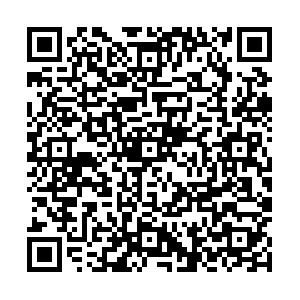|
[1]Branch of Hepatobiliary Diseases, China Association of Chinese Medicine, Branch of Chinese Patent Medicine, China Association of Chinese Medicine.Guidelines for the clinical mmanagement of herb-induced liver injury[J].J Clin Hepatol, 2016, 32 (5) :835-843. (in Chinese) 中华中医药学会肝胆病分会, 中华中医药学会中成药分会.中草药相关肝损伤临床诊疗指南[J].临床肝胆病杂志, 2016, 32 (5) :835-843.
|
|
[2]Drug-induced Liver Disease Study Group, Chinese Society of Hepatology, Chinese Medical Association.Guidelines for the management of drug-induced liver injury[J].J Clin Hepatol, 2015, 31 (11) :1752-1769. (in Chinese) 中华医学会肝病学分会药物性肝病学组.药物性肝损伤诊治指南[J].临床肝胆病杂志, 2015, 31 (11) :1752-1769.
|
|
[3]BJORNSSON ES, BERGMANN OM, BJORNSSON HK, et al.Incidence, presentation, and outcomes in patients with drug-induced liver injury in the general population of Iceland[J].Gastroenterology, 2013, 144 (7) :1419-1425, 1425.e1-e3;quiz e19-e20.
|
|
[4]NAVARRO VJ, LUCENA MI.Hepatotoxicity induced by herbal and dietary supplements[J].Semin Liver Dis, 2014, 34 (2) :172-193.
|
|
[5]Cooperative Group of Hepatobiliary Disease of Digestive Disease Branch of Chinese Medical Association.A multicenter survey on hospital inpatients with drug-induced acute liver injury in China[J].Chin J Dig, 2007, 27 (7) :439-442. (in Chinese) 中华医学会消化病学分会肝胆疾病协作组.全国多中心急性药物性肝损伤住院病例调研分析[J].中华消化杂志, 2007, 27 (7) :439-442.
|
|
[6]ZHU Y, NIU M, CHEN J, et al.Comparison between Chinese herbal medicine and western medicine-induced liver injury of1985 patients[J].J Gastroenterol Hepatol, 2016, 31 (8) :1476-1482.
|
|
[7]ZHOU Y, YANG L, LIAO Z, et al.Epidemiology of drug-induced liver injury in China:a systematic analysis of the Chinese literature including 21, 789 patients[J].Eur J Gastroenterol Hepatol, 2013, 25 (7) :825-829.
|
|
[8]JIN R, GU HY, LI LL, et al.Current status of Chinese herbal preparations included in Liver Tox database[J].Chin J Hepatol, 2016, 24 (11) :817-823. (in Chinese) 金锐, 顾红燕, 李丽莉, 等.Liver Tox数据库收录的中草药制剂现状与分析[J].中华肝脏病杂志, 2016, 24 (11) :817-823.
|
|
[9] CHEN CW.Carefully reviewing the history of diagnostic scales and paying more attention to the diagnostic value of Roussel-Uclaf causality assessment method scale for drug-induced liver injury[J].Chin JHepatol, 2016, 24 (11) :801-803. (in Chinese) 陈成伟.认真回顾研究史重视RUCAM量表在药物性肝损伤诊断中的应用[J].中华肝脏病杂志, 2016, 24 (11) :801-803.
|
|
[10]SUN X, YANG T, ZHU CW, et al.Herbal medicine-induced liver injury in China[J].Integr Med Int, 2016, 3:53-56.
|
|
[11]XIONG A, YANG F, FANG L, et al.Metabolomic and genomic evidence for compromised bile acid homeostasis by senecionine, a hepatotoxic pyrrolizidine alkaloid[J].Chem Res Toxicol, 2014, 27 (5) :775-786.
|
|
[12]FANG L, XIONG A, YANG X, et al.Mass-spectrometry-directed analysis and purification of pyrrolizidine alkaloid cis/trans isomers in Gynura japonica[J].J Sep Sci, 2014, 37 (15) :2032-2038.
|
|
[13]CUI HR, BAI ZF, SONG HB, et al.Investigation of potential toxic factors for fleece-flower root:from perspective of processing methods evolution[J].Chin J Chin Mat Med, 2016, 41 (2) :333-339. (in Chinese) 崔鹤蓉, 柏兆方, 宋海波, 等.从古今炮制方法演变探讨何首乌毒性的潜在影响因素[J].中国中药杂志, 2016, 41 (2) :333-339.
|
|
[14]CHALASANI NP, HAYASHI PH, BONKOVSKY HL, et al.ACGClinical Guideline:the diagnosis and management of idiosyncratic drug-induced liver injury[J].Am J Gastroenterol, 2014, 109 (7) :950-966;quiz 967.
|
|
[15]LIN G, WANG JY, LI N et al.Hepatic sinusoidal obstruction syndrome associated with consumption of Gynura segetum[J].J Hepatol, 2011, 54 (4) :666-673.
|
|
[16]ZHU Y, LI YG, WANG Y, et al.Analysis of clinical characteristics in 595 patients with herb-induced liver injury[J].CJITWM, 2016, 36 (1) :44-48. (in Chinese) 朱云, 李永纲, 王葽, 等.595例中药导致肝损伤临床特征分析[J].中国中西医结合杂志, 2016, 36 (1) :44-48.
|

 本文二维码
本文二维码


 PDF下载 ( 1757 KB)
PDF下载 ( 1757 KB)

 下载:
下载:

